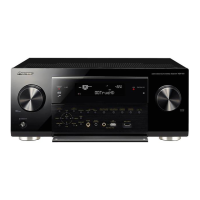
Do you have a question about the Pioneer VSX-1121-K and is the answer not in the manual?
| Channels | 7.1 |
|---|---|
| THD at Rated Power | 0.08% |
| Frequency Response | 10 Hz - 100 kHz |
| Total Harmonic Distortion | 0.08% |
| Input Impedance | 47 kOhms |
| Input Sensitivity | 200 mV |
| HDMI Inputs | 6 |
| HDMI Outputs | 1 |
| Network Capability | Yes |
| Wi-Fi | No |
| Bluetooth | No |
| Component Video Inputs | 2 |
| Component Video Outputs | 1 |
| Digital Optical Inputs | 2 |
| Digital Coaxial Inputs | 1 |
| Analog Audio Inputs | 5 |
| Headphone Jack | Yes |
| Ethernet Port | Yes |
| USB Port | Yes |
| 3D Support | Yes |
| Audio Return Channel (ARC) | Yes |
| Audio Formats Supported | Dolby TrueHD, DTS-HD Master Audio |
| Video Upconversion | Yes (to 1080p) |
Instructions for connecting speakers, components, and external devices.
Essential settings for speaker impedance, language, and sound tuning.
Explanation of buttons and color-coding for operating the receiver and other components.
Identification and function of buttons, dials, and displays on the receiver's front panel.
Diagram and explanation of all input/output terminals on the rear panel.
Guides for selecting speaker systems and connections based on your setup.
Information on audio signal priority, video conversion, and HDMI connections.
Explanation of HDMI technology, supported formats, and HDCP compatibility.
Guidance on connecting TVs and playback components using HDMI and other methods.
Guide to automatically optimizing sound settings using the MCACC system.
Customizing input assignments and skipping unused inputs for remote control mapping.
Steps for selecting, playing, and adjusting volume for various source components.
Pairing the Bluetooth adapter and device for wireless music enjoyment.
Exploring different listening modes like Auto Surround, Standard Surround, and THX.
Accessing and playing audio files and Internet radio via the network.
Operations for playing audio files stored on network components.
Explanation of synchronized operations between components via HDMI.
Steps for connecting components to enable synchronized operation.
Adjusting bass, treble, sound retriever, digital noise reduction, and dialog enhancement.
Choosing and managing saved MCACC sound field settings.
Fine-tuning audio parameters like LFE, SACD gain, delay, and surround effects.
Adjusting picture quality settings such as brightness, contrast, color, and detail.
Steps to reset all receiver settings to their original factory default values.
Explanation of modes like Preset Recall, Code Learning, and Multi Operation.
Assigning input functions and learning commands to control other devices.
Directly selecting preset codes and programming remote control signals.
Using the remote control to operate various TV and Audio/Video components.
Detailed setup and calibration using the Advanced MCACC system.
Customizing speaker and room acoustics for optimal surround sound.
Precisely adjusting the volume balance of each speaker channel.
Setting precise delay for speakers to ensure sound arrives simultaneously.
Manually adjusting frequency balance and EQ for speaker systems.
Minimizing room reverberation effects for optimal sound based on direct speaker sound.
Viewing calibrated settings for speaker setup, levels, distances, and standing wave.
Manually adjusting speaker settings, input assignments, and OSD language.
Detailed configuration of speaker system, size, number, and crossover frequency.
Solutions for common power, sound, and display issues.
Resolutions for AVNavigator, USB, and network connectivity problems.
Resolving errors related to ambient noise, speaker connections, and phase detection.
Resolving HDMI indicator blinking, no picture/sound, HDCP errors, and synchronized operation issues.
Steps for adjusting speaker layout, distance, height, and orientation for optimal sound.
Detailed specifications for amplifier, tuner, video, digital, integrated control, and network sections.
Details of Pioneer's limited warranty coverage, terms, and conditions.
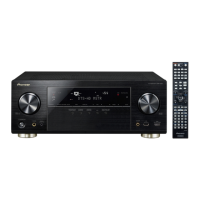
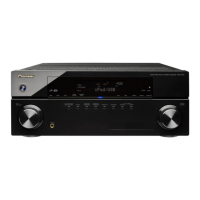
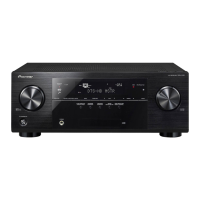

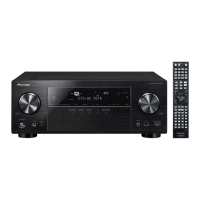
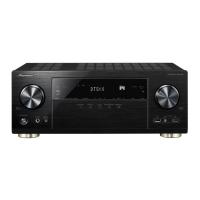
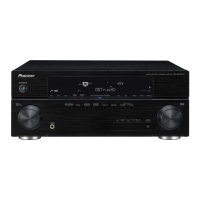
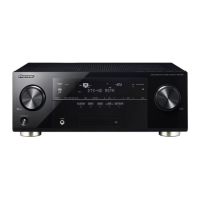
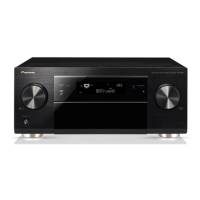
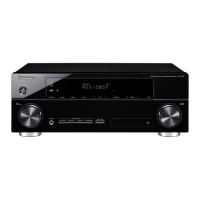

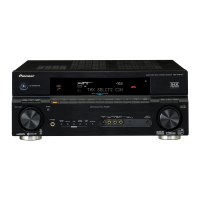
